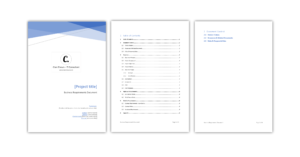
Handling inconsistent case management systems
In this article I will explore how to handle inconsistent case management business processes.
Background
There are many instances when workers have to perform assessment on customer enquiries (claims, applications, cases etc). Here are some examples of case management business processes:
- Insurance claims
- Customer complaints
- Police reports
- Home loan applications
- Customer product returns
- Application for a social services payment
Case management is a difficult task to perform. Getting it right can mean an effective and efficient work force and happy customers. Getting it wrong can lead to loss of customers and in its worst cases, loss of life. Think about handling a claim for life support equipment or money from the government to feed a family. Complexity is a result of strict sets of complex rules governing the outcome of a case. Additionally, customer can be taken down many different paths, depending on their circumstances.
Often we are creating case management business processes that have to fit all the permutations and combinations of situations that can occur. The one constant with most case management processes, is that there is usually one main end point. One goal the customer knows they are trying to reach. The part that is difficult is knowing what the customer needs or wants and getting it for them as quickly as possible.
Case management
Let’s give case management a definition. When I speak of case management I am referring to the steps taken by a staff member to process a request made by a customer. This includes steps that involve software and non-software related work. Of course we need to consider the customer as an actor in all case management user stories. However I want to focus on case management as kind of a white box study. I want to focus on the internal structures and simplify the input and output.
Case management characteristics:
- Generally has a lot of human interaction.
- Generally cannot be automated and if they are we will exclude them from this conversation
- Often traverses through different staff with varying skills/delegation
- Is a series of steps to achieve an outcome.
- Each case varies in complexity.
- Repetitive cases that have the same solution.
- The main goal is to quickly and efficiently determine what the customer wants and who in the organisation can address the issue.
When a case comes in it is raw form, no one knows what it is. It might not even be work, it could be just a general question. A case can also morph from one thing to another. It can start off as a complaint and end up as a sale. Or begin as an application and end as an identification of fraud. It takes the skills of one or many people to add their expertise to work out what the customer is trying to do.
I remember I had to call my tax office with a very specific question. The process went as follows:
Step 1: Call tax office.
Step 2: Answer automated triage questions about my enquiry.
Step 3: Answer proof of identity (POI) questions as much as possible.
Step 4: I finally spoke with a real person, who listened to my query and tried to help.
Step 5: Another staff member, with higher access to my account, was then assigned to help me.
Step 6: I was sent again to the SME for the topic I was enquiring about.
Step 7: The SME was able to help me and I found the answer I was after.
My initial thoughts, while I was put on hold 3 times, was that it was really inconvenient and annoying. Then I concluded my enquiry was quite specific and they needed to triage my case. Which upon reflection they did it pretty well, it was efficient, polite and in the end effective, because I found the person with the best knowledge and I had my question answered. In this instance it’s impossible for all employees to know the answer to complex questions.
Having specialised people is necessary and effective triage to uncover the customers issue and find the right person, as quickly as possible.
When I think about the input of the enquiry, I didn’t actually know what kind of answer I was looking for. I had a concern, though I wasn’t sure if it was a legitimate problem. Following triage once I called the tax office was difficult because I barely knew the name of the topic I was enquiring about. The triage system worked, as I found the SME who knew how to handle my questions. The output of the case was, knowing what the tax related topic was and I could do my own research. The answer I got as output of the case, was different to what I was expecting.
Potential problems
The following are a list of problems organisations with complex case management business processes face.
- Inconsistent case handling
There are variations in the business process, based on experience and interpretation of assessment rules, by staff.Consequence: Customers receive different experiences and outcomes, errors in payment or product handling, more complexity and change in systems, more incidents are raised with IT and business areas. Overall an increase cost and resource consumption. Inability to perform good quality business intelligence reporting.
- Processing time is increasing.
Organisation can often find themselves trying to measure how long each case takes, and in doing so trying to categorise each case. Management will be frustrated with not knowing how to capture metrics on cases. Understanding, why some cases of the same type take longer than others.Consequence: Customer frustration, reduced customer retention, more difficult barrier for opportunities to convert to customers. One organisation found it was cheaper to send replacement parts for their product without verifying the claim. They don’t check that the requestor is a customer, or they have purchased the product they claimed to be defective. They had identified that the verification part of the ‘replacement parts case management process’ was more costly than the replacement part and cost of shipping. Mapping your business processes and understanding the metrics is important.
- More complex and expensive software
Who makes assessment decision? This is a question someone will ask at some point when designing your case management business process. Does the staff member make the decision or does the system. Knowing who makes the decision is important. It could have legal ramifications and it can also increase processing time and mean you can move staff onto more important work. This is the main reason software is used to improve case management. Automating some aspects of case management and up-skilling staff and moving staff on to more complex cases. Think of bank tellers, when ATM’s became more ubiquitous and trusted, the banks hired less staff and move the old staff on to more important jobs, like sales.
- The human element
We have to remember the human element in all customer interactions. Customers’ expectations, experiences and perceptions will always vary. It’s made harder if your services are complicated and not based on common knowledge.
Tips on handling inconsistencies
Every case management process is different. You want it to be different, how else would you have a competitive edge? How else would you be so flexible with changing to your customers needs? Below are some general ideas on how to better your case management business processes.
- Training can help with this.
Have regular training sessions, even for the most experienced staff. Have delegated SME’s/ Champions (pay them more if you have too). These people should be characterised as those who are patient and tolerant to help others. One client I worked with used their system testers as staff trainers. - Business process mapping.
Understand your business process, make it common knowledge amongst your staff, make it visible and easy to follow. - Writing down and agreeing on rules and methods of assessment.
- Categorising cases is hard, but keep working at it to refine your categorisation. One way to do it is through peer tagging. When a case is started and closed it is tagged with a key word or a tag is derived through the case notes.
- Triage cases to assign them to the most appropriate staff member based on skill, experience, authority or security clearance. This is most common approach. The channel should always be the same. Don’t have different triage channels. All entry points should feed into the same triage rules engine.
- Retain experienced staff and subject matter experts, they are the pillars that hold up the quality of your customer service.
Summary
Case management is an especially difficult task to perfect. However in today’s modern world, we must utilise technology to make things better. Key concepts to remember when performing case management using software:
- Focus on the 80% and keep things simple.
- Make business processes well known and visible.
- Retain experienced staff, resource them on the most difficult cases.
As always, keep your requirements and goals at the forefront of your decision making. For example, focusing on the 80% might mean lower returns but more media exposure. The 20% might yield higher profits but low media exposure. What are your priorities, what are your goals? Do your research, decide on a direction and remind your team as often as necessary what they are striving towards.

